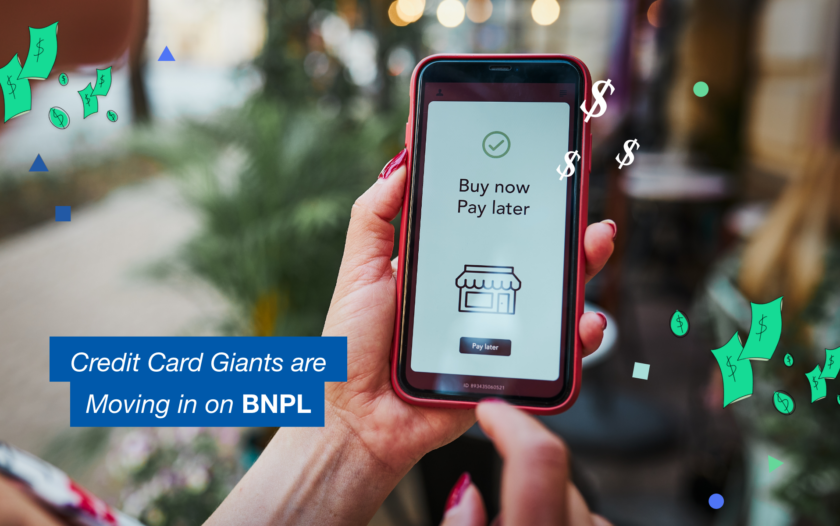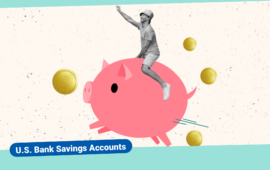Credit Card Giants Move In on BNPL: A Game changer for Consumer Credit?
About Anouare
Anouare is a seasoned writer, editor and content strategist who started her career as a lifestyle journalist before stepping into leadership roles at publications such as AskMen and Goalcast. From editorial strategy to content marketing and project-management, she has tackled various challenges in digital media and discovered her passion for mentoring others in the process. She loves a good money mindset book and believes you can create your dream lifestyle by being yourself.
Read full bio
Imagine facing an unexpected car repair. With your budget already tight and your credit card balance already high, the ability to split this expense into manageable installments can be a lifeline.
Or suppose your finances are comfortable and you’re planning a trip. The option to split the cost of your flights over several months may be appealing – you’ll have extra cash flow for other travel expenses.
These are only a couple of examples of consumers leveraging Buy Now, Pay Later (BNPL) services, which offer you the ability to break up a purchase into several payments with little to no interest.
The BNPL sector exploded during the pandemic, driven by the surge in online shopping and a shift in consumer spending habits. Popular retailers and brands have been using BNPL lenders like Afterpay, Affirm and Klarna to entice customers to press on the “checkout” button after loading their cart.
Now credit card giants want a piece of the pie, with brands like American Express, Mastercard and Barclays coming up with their own flexible payment options.
Integration of BNPL Programs by Major Brands
While we may be past peak BNPL, the service is far from a passing trend. In a world grappling with inflation and high interest rates, BNPL is a way to keep spending, especially for Gen Z shoppers. New consumer behaviors and innovative products are solidifying BNPL’s place in the financial landscape.
Credit card providers have recognized both the potential and staying power of this form of lending. Here are a few examples of the programs major brands have come up with to appeal to different types of borrowers.
American Express
American Express was one of the first traditional players to get in on the BNPL game with its “Plan It” program, which allows cardholders to split large purchases into fixed monthly payments with no interest – only a monthly fee.
Mastercard
Mastercard recently launched its own BNPL program, Mastercard Installments. It’s integrated with existing Mastercard services and gives consumers a variety of interest-free pre-approved BNPL options when it’s time to pay.
Barclays
In the UK, Barclays partnered with Amazon to offer Installments by Barclays at checkout. The program does entail a hard credit check and some interest – though less than the typical credit card rate. However, you can stretch payments for up to 48 months.
In-house BNPL programs offer some advantages when compared to the likes of Afterpay. There’s increased data protection. The service is seamlessly integrated with your existing card and online portal, offering a convenient user experience. You may even rack up rewards.
But what does all this mean in terms of consumer debt and spending habits? While original BNPL lenders also allowed high-risk borrowers to finance purchases, credit card companies are now approaching these services a little differently.
There’s a difference between someone using Klarna to cover groceries and a cardholder with a good score using installments to manage cash flow and avoid paying interest.
One thing is for sure: the BNPL-ifcation of consumer debt may increase the risk of debt accumulation. Some experts are even talking about BNPL-driven “phantom debt” that economists are not taking into account.
New Types of Customers More Likely to Use In-House BNPL Tools
With credit card issuers now offering BNPL tools, new types of customers are more likely to warm up to the concept.
If you’re an existing credit card user, your loyalty and trust in established brands might make you more likely to try BNPL for the first time.
Higher-income consumers may see the appeal of using installment payments for luxury or discretionary purchases. If you can pay later, why wouldn’t you? Deferred payments with lower or no interest can be part of your overall money management.
Now that BNPL is no longer a fad, financially literate consumers may also see the appeal of strategically using this form of borrowing to manage cash flow more effectively and decrease overall interest costs.
Credit Card BNPL Plans VS Third-Party BNPL Services
If you compare the BNPL options of major credit card issuers with the third-party services that fuelled the popularity of BNPL, there are interesting nuances.
Established credit card brands offer a market position and consumer trust that emerging BNPL providers may lack. Consumers may view in-house BNPL programs as more secure and reliable, with the added benefit of seamless integration with existing credit cards, reducing friction in the payment process.
In-house BNPL is more likely to appeal to existing credit card users. This often means people with higher incomes, better credit card scores and increased financial literacy.
On the other hand, third-party BNPL services can attract a broader range of users, including high-risk borrowers with shaky finances. For example, according to NerdWallet, BNPL loans are most commonly used by young people and parents of small kids.
Potential Challenges and Risks
While BNPL can be a wonderful solution that prevents the accumulation of high-interest credit card debt, it can also drive some consumers to bury themselves in a financial hole without realizing it.
The over-reliance on BNPL for managing finances can lead to debt accumulation and increased financial stress, potentially harming your credit score and long-term financial health.
Plus, it’s important to keep in mind that regulation is still catching up with the phenomenon. Many areas are lacking robust consumer protections. Some BNPL third-party providers report information to credit bureaus, others don’t.
There are currently gaps to bridge and questions to answer. Until enhanced measures to safeguard consumers and ensure that the convenience of BNPL doesn’t come at the cost of financial stability, the lack of regulation could hurt your finances.
Future Trends and Developments
Consumer behavior trends indicate a growing preference for flexible payment options, which will shape the future of the credit market. More banks may start to offer in-house BNPL. This may force third-party providers to get more competitive. It’s also likely to translate into innovations and enhancements that benefit shoppers.
Could it spell a major shift in terms of credit card spending? It’s too early to tell. But consumer needs and preferences – as well as economic forces – will continue to shape the landscape.
Bottom line
BNPL may have seemed like a buzzword at first, but it’s a form of financing that has disrupted the financial industry. With big card issuers like American Express and Mastercard offering in-house versions of the service, the disruption may just continue.
As a consumer, it’s crucial to remember that BNPL comes with benefits but also carries the risk of increased financial strain. Rely on it wisely and stay on the lookout for both new products and features and regulations that may change things once again.









